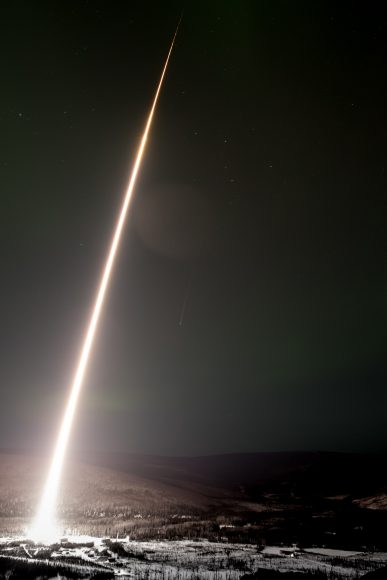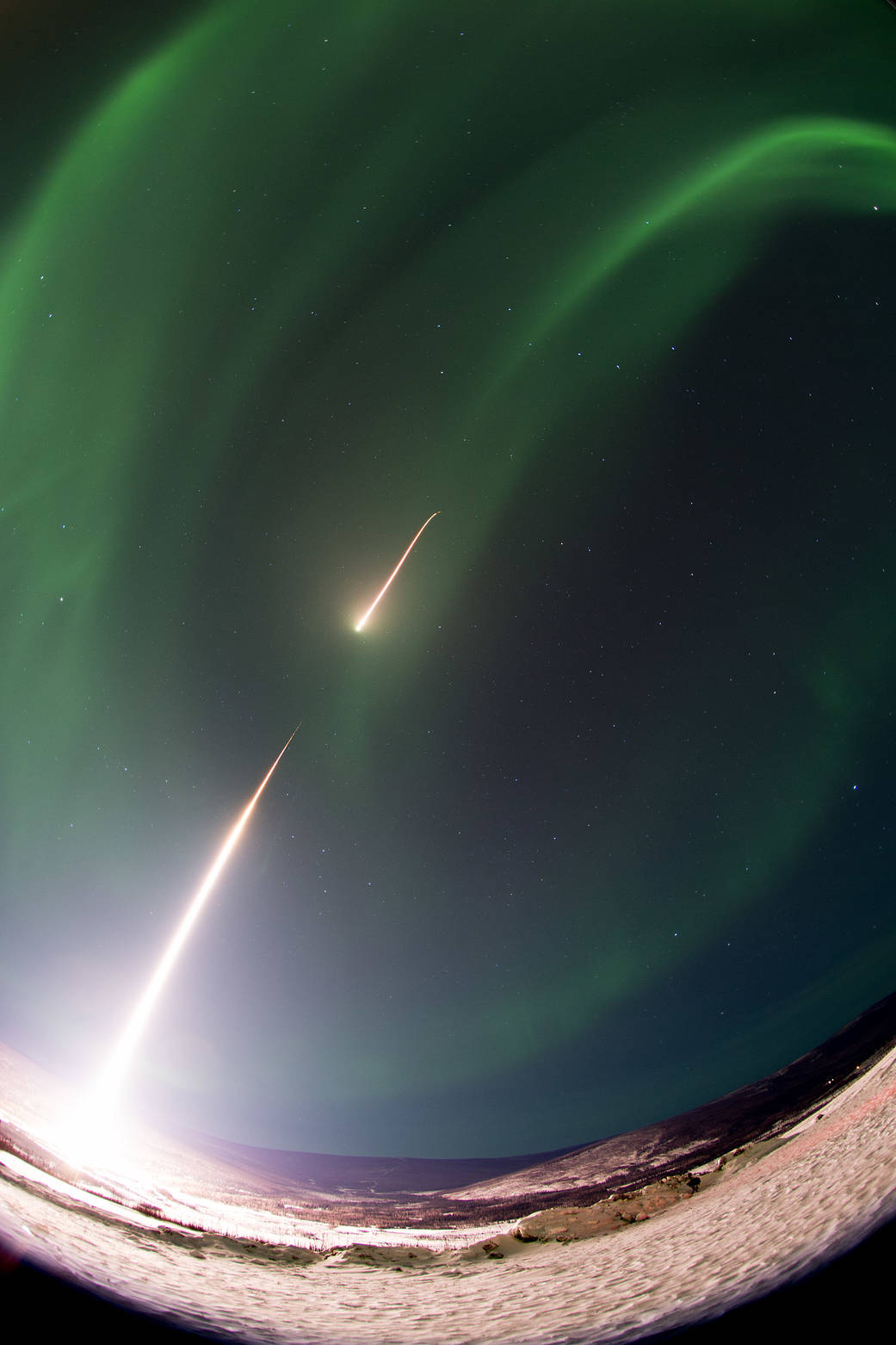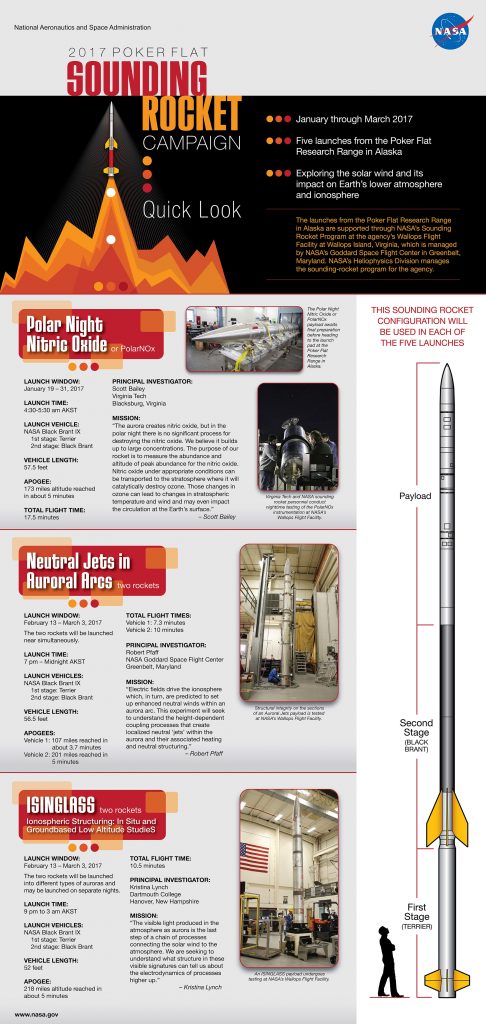Not only is it aurora season in Alaska, its sounding rocket season! NASA started launching a series of five sounding rockets from the Poker Flat Research Range in Alaska to study the aurora. The first of these rockets for this year, a Black Brant IX, was launched in the early morning hours of February 22, 2017.
The instrument on board was an Ionospheric Structuring: In Situ and Groundbased Low Altitude StudieS (ISINGLASS) instrumented payload, which studies the structure of an aurora.

This is not the first sounding rocket flight from Poker Flats to launch into an aurora. Starting in 2009, this research has been taking place to help refine current models of aurora structure, and provide insight on the high-frequency waves and turbulence generated by aurorae. This helps us to better understand the space weather caused by the charged particles that come from the Sun and how it impacts Earth’s lower atmosphere and ionosphere.
“The visible light produced in the atmosphere as aurora is the last step of a chain of processes connecting the solar wind to the atmosphere,” said Kristina Lynch, ISINGLASS principal investigator from Dartmouth College. “We are seeking to understand what structure in these visible signatures can tell us about the electrodynamics of processes higher up.”
While humans don’t feel any of these effects directly, the electronic systems in our satellites do, and as our reliance on satellite technologies grow, researchers want to have all the data they can to help avert problems than can be caused by space weather.
The rocket sent a stream of real-time data back before landing about 200 miles downrange shortly after the launch.
The launch window for the remaining rockets runs through March 3. ISINGLASS will fly into what is known as a dynamic Alfenic curtain, which is a form of electromagnetic energy thought to be a key driver of “discrete” aurora – the typical, well-defined band of shimmering lights about six miles thick and stretching east to west from horizon to horizon.
NASA says that the five launches in the 2017 sounding rocket campaign will add to our body of information about this space through which our spacecraft and astronauts travel near Earth. By studying the interaction of the sun and its solar wind with Earth’s upper atmosphere, scientists are also able to apply the knowledge to other planetary bodies — helping us understand these interactions throughout the universe as well.
Here’s an infographic from NASA about the 2017 sounding rocket launches from Poker Flats:
Read more: NASA



I’m not surprised they are quietly studying the Auroras. My guess is the findings will not be published. It took 100 years for Birkeland to finally receive the Nobel prize for his work showing the Auroras were due to electrical currents from the sun. He was ridiculed and ostracized for his theories until Navy satellites proved him correct in the 60’s.
Yet still astronomers insist there can be no charge separation in the void of space and therefore no electric currents. This is the basis for the total rejection of the electric universe model proposed by plasma cosmologists. Despite the newest radiotelescope data which contradicts the gravity based standard model they cling to failing theories and produce mathematical salvages which defy common sense.
But the data is now overwhelming. The IBEX mission alone has dynamited the theory of a nuclear powered sun. The model of an electric sun is being confirmed by all data.
The finding of “rivers of helium” flowing into the sun from intergalactic sources by the IBEX mission was published in the Astrophysics Journal Supplement Oct 2015.
The surface of the sun is now confirmed to be plasma surrounded by massive magnetic fields. This fits perfectly with the electric model that says star formation is due to intense constriction of Birkeland currents (which consist of double layered plasma sheaths) by their magnetic fields at the “Z Pinch” (a well known principle in electrical engineering).
Infrared data from penumbra show a cool dark interior. Surface temperatures of 5k pale in comparison to the 2 million degree temps measure in the corona. This data strongly contradicts nuclear explosions in the core as a source of the sun’s electromagnetic energy. The acceleration of charged particles from the sun as they approach earth can ONLY happen in an electric field. To suggest they have arisen from a nuclear explosion in the core of the sun is ridiculous.
The data is irrefutable. Stars are an electromagnetic phenomenon…..very simple. Once this obvious fact is accepted by mainstream astrophysicists they will be forced to swallow the the rest of the model that follows….”black holes” are actually plasmoids, there is no dark matter, and the laws of physics and chemistry are correct and do not have to be abandoned for the sake of singularities or neutron stars.
I don’t know who Occam was but his razor was pretty sharp. The simplest explanation is usually correct.